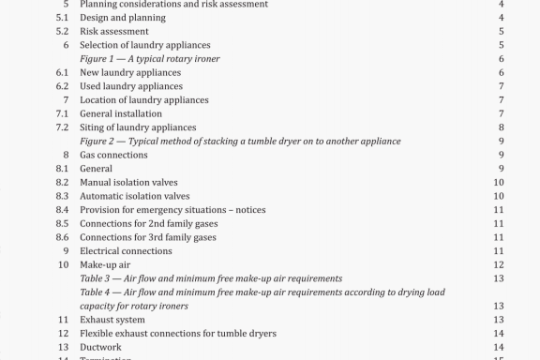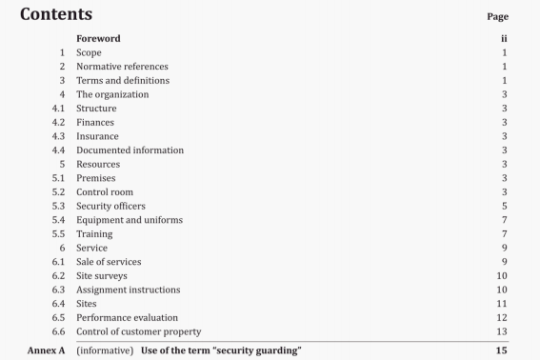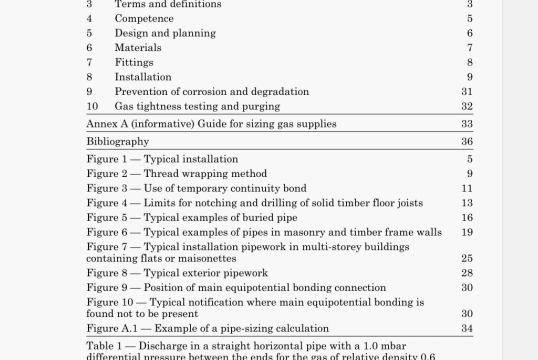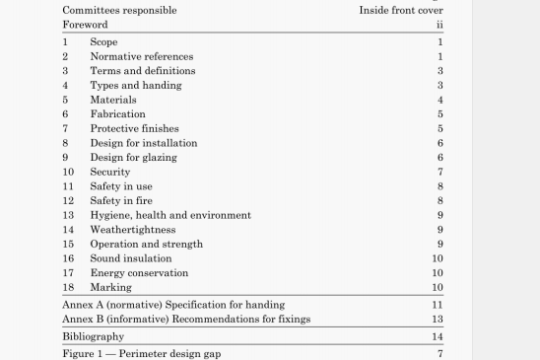BS EN ISO 13736:2013 pdf download
BS EN ISO 13736:2013 pdf download.Determination of flash point ——Abel closed-cup method (ISo13736:2013).
7 Apparatus preparation
7.1 Location of the apparatus
Support the Abel apparatus 6i) on a level and steady surface In a draught.free posltlon
NOTE 1 When draughts cannot be avoided, it is good practice to surround the apparatus with a shield
NOTE 2 When testing matenals that produce toxic vapours. the apparatus should he located in a fume hood with an Individual control of air flow, adjusted such that vapours can b withdrawn without causing air currents around the test cup during the lest.
7.2 Cleaning the test cup
Wash the test cup with an appropriate solvent (j) to remove any traces of gum or residue remaining from a previous test. Dry using a stream of clean air to ensure complete removal of the solvent used.
7.3 Apparatus examination
Examine the test cup, the cover and other parts to ensure that they are free from signs of damage and deposits. liany damage is found,either rectify the problem or. ifthis is not possiblc,obtain a replacement. If deposits are found remove them.
7.4 Heating/cooling
7.4.1 LiquId baths
LJsewateror.forlessthanorncar0°Cbathtumpcratures,useamixtureofequalvolumcso1ethancdiol(2)
and water, or glycerol (52) and water, or silicone oil, or other suitable liquids, to completely 1111 the heating vessel and to fill the inner air chamber that surrounds the test cup to a depth ofat least 38 mm.
Adjust the temperature of the heating vessel using an external cooling bath () if required, to at least 9,0 °C below the expected flash or to -35 °C, whichever is the higher.
7.4.2 Solid metal baths
Follow the manufacturers’ instructions to adjust the temperature of the bath to at least 9,0°C below the
expected flash point or to -35 °C, whichever Is the higher.
7.4.3 Test cup and cover
Loosely assemble the cover and test cup. Adjust their temperature. using an external cooling bath () or refrigerator if required, toat least 17,0°C below the expected flash point or to —35 °C. whichever Is the higher.
Use the thermal insulating cap (&,) at lower temperatures.
Ensure that neither cooling liquid nor vapour from the cooling bath, that could affect the flash point of the product under test, enters the test cup.
NOTE I Cooling a cover oi test cup that Is wet with water to below 0 °C can cause sticking due to ice (e.g. sticking of the slide). Wiping the apparatus dry with a duster or a piece of absorbent paper before cooling to below 0°C Is usually sufficient to prevent Icing but, alternatively, Icing can he minimized by the use of a thermal insulating cap () and by lubricating the outer face of the lip of the test cup and the slide with a lubricant (5.3).
NOTE 2 A low humidity laboratory environment helps minimize the formation of ice crystals at test temperatures of below 5°C.
7.5.1 Verif the correct functioning of the apparatus at least once a year by testing a certified reference material (CRM) (see £4 and Annex D). The result obtained shall be equal to or less than RI from the certified value of the CRM, where R is the reproducibility of the test. It is recommended that more frequent verification checks he made using secondary working standards (SWS) (A).
A recommended procedure for apparatus verification using CRMs and SWSs. and for the production of SWSs, is given in Annex D.
Do not use the numerical values obtained during verification checks to correct subsequent flash point results or provide a bias statement.
7.5.2 Ensure the correct operation of electric hot wire ignition sources, in accordance with the manufacturers’ instructions.
8 Sampling
8.1 ObtaIn samples in accordance with the procedures given in ISO 3170, ISO 3171. ISO 15528 or an equivalent national standard unless otherwise agreed.
8.2 Place sufficient sample volume for testing in a tightly sealed container appropriate to the material
being sampled and, for safety purposes, ensure that the sample container is filled to between 85 % and
95% of its capacity.
8.3 Store the samples In conditions that minimize vapour loss and pressure build-up. Avoid stormg the samples at temperatures in excess of 30,0 °C.
9 Sample handling
9.1 General
Since the presence of small proportions of highly volatile materials needs to he detected, this test should be the first determination on a received sample to reduce the loss oFthcse volatile materials.
9.2 Storage prior to testing
If an aliquot of the original sample is to be stored prior to testing, ensure that the container is tilled to more than 50 % of its capacity.
NOTE Results of flash point determinations can he affected if the sample volume falls below SO % of the container’s capacity.
9.3 Sample preparation
9.3.1 Sample cooling
Cool the sample to a temperature at least 17.0°C below the expected (lash point or to —35,0 °C. whichever is the higher, before opening the container.
Cool liquids that crystallize on cooling to just above their melting points.
9.3.2 Samples containIng undissolved water.




